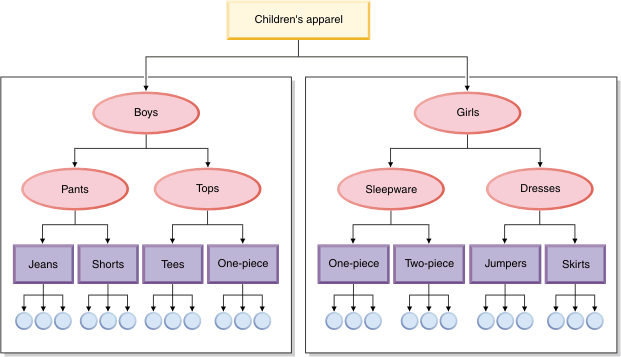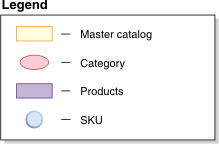Master catalog
The master catalog is the central location to manage your store merchandise. Everything that you need in your store is contained within the master catalog. It is the single catalog that contains all products, items, relationships, and standard prices for everything that is for sale in your store.
Every store in the WebSphere Commerce system must have a master catalog. You can share the master catalog across stores and define as many stores as needed.
In addition to creating a master catalog for your catalog management, you might also choose to create one or more sales catalogs for display purposes. A sales catalog can contain the same entries as the master catalog, but the sales catalog has a flexible structure for customer display purposes. You can have as many sales catalogs as you want. For more information about sales catalogs, see Sales catalogs
Use the Management Center Catalogs tool to view and manage your master catalog. If you migrated from an earlier version of WebSphere Commerce, you can use the WebSphere Commerce Accelerator Product Management tools to view and manage your master catalog.
- The master catalog must be a proper tree, which means that there are no cycles. You must avoid the following type of scenario: The parent category A has a subcategory B. It is important that B and any of B's subcategories are not the parent category of A.
- A catalog entry or category cannot belong to multiple parent categories in the master catalog. To place a catalog entry or category in multiple categories, use a sales catalog.
- The Catalog tool and the Product Management tools work with only products that are associated with a master catalog.
Master catalog example
The following diagram illustrates a section of a master catalog for a children's clothing store:


This part of the master catalog follows a basic navigation for a store containing clothing for Boys and Girls. Following the two top (or parent) catalog groups, are additional catalog groups ( Pants, Tops, Sleepwear, and Dresses), going to products ( Jeans, Shorts, Tees, Onesies, One-piece, Two-piece, Jumpers, and Skirts) and their related items, defined by attributes and attribute values.